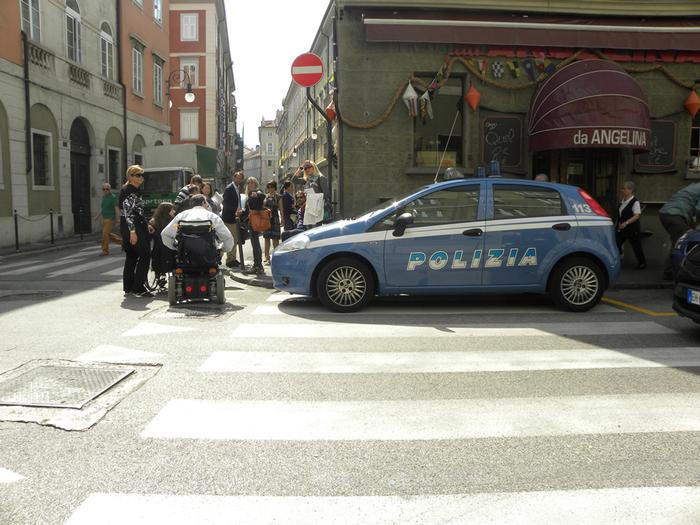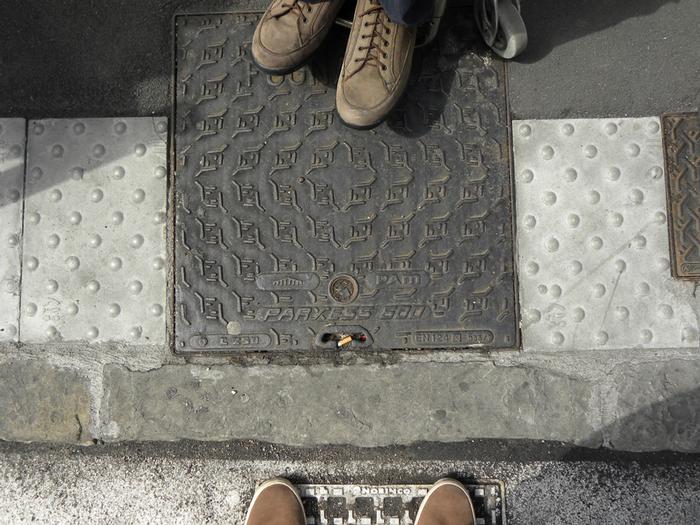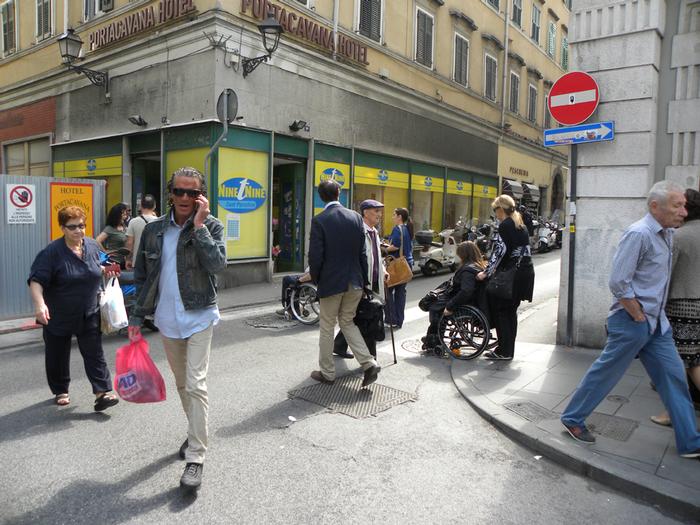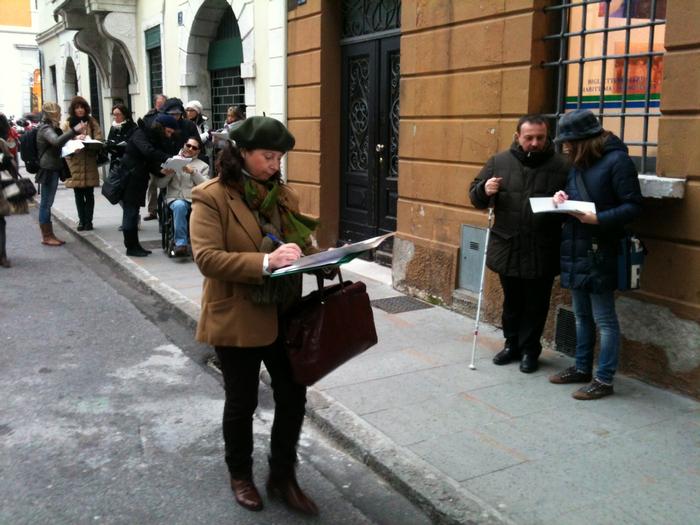[ID:764] increase awarness of value of accessibilityItaly Using accessibility as a magnifier to look at 21st century cities may be helpful to find a new interpretation of some contemporary urban issues and of the complex physical and social morphology of the city itself. If we stop considering accessibility a merely technical and prescriptive feature of architecture, we can make full use of its many-sided, interdisciplinary potential in order to improve social welfare. If we carefully observe the territory and try to interpret the real needs of its citizens, we will find it easy to build a network of concrete ideas, distinct yet inclusive, able to include all the environmental and social sustainability-related issues requested by today's demand in a welfare dimension. Our society relies on differences, which can become a resource for the whole community only if we will manage to answer in a broad, diversified and flexible way, not just as architects and designers, but first of all as men. Accessibility must be a non-negotiable prerequisite, completely assuring to everybody the chance to play an active role in the public life they belong to, making free use of the whole range of their functional skills.
However, in order to concretely realize a society whose environment, goods and services are truly accessible, the whole community should be aware of disability and accessibility-related issues. Therefore, it is greatly important to raise public awareness. Citizens need to change their social thinking, namely, they must re-discover a shared public spirit, by restoring ancient values that today are almost forgotten. Paradoxically, though very positive on its own, globalization, if applied to a consumer culture based on individualism, makes citizens forget the community, territory and culture they truly belong to. Therefore, all the people living in a built environment must be truly aware of the basic ideas underlying accessibility and environmental comfort. Through information, but above all through the "positive actions" such as planning of goods, spaces and services, people can learn about the actual advantages of urban accessibility for the whole community.
Quoting Edward Steinfeld (Buffalo School of Architecture and Planning ) "the relationship of material culture (architecture, products, vehicles, communication systems, media, etc.) to social life is characterized by reciprocity". Indeed, the culture of a people emerges in the daily public life of its country. Consequently, material culture has to be seen as a sum of the tangible and intangible aspects of a human being's social life; not only infrastructures, goods and services, but also culture, values, relations and ambitions. Architecture is one of the many means at our disposal to concretely apply material culture to social reality. From a historic point of view, this branch of learning could be considered the best proof of the ability of a people - and thus of its culture - to portray itself. On this point, it is worth analyzing how this representation can be interpreted in two different ways, according to the point of view. The mutual relation between social reality and the culture it encompasses binds these two elements tightly and makes them influence each other to such an extent, that it becomes almost impossible to perceive which one is the cause and which the effect, thus creating a virtuous or vicious circle, depending on which kind of interaction it produces.
However, it is legitimate to wonder how material culture, once turned into reality - architecture, services, goods, information... -, affects society, considering that with its products it forms, transforms and sometimes even deforms its true culture. Such reasoning is extremely relevant if applied to the matter of accessibility. The man-made features of our environment are very often much more than just useful: they are part of a communication system that characterizes our very daily life, the way we look at the world and act in it; in one word, our culture. Architecture, therefore, plays a role of great social-civic and moral responsibility; after all, it stems from the creative synthesis of an idea, an outlook that seizes space and creates an area that reflects our goals. Furthermore, it involves the creation of places where "we" can fully live. However, determining who these "we" are is the problem. The "we" for whom we design must be a sum of the individuals making up the varied complexity of mankind, and we must aim at creating situations in which any real person, regardless of his physical, behavioral, cultural, linguistic or whatever features, can find enrichment in the interaction with the physical and social environment, that is, with architecture. As architects we can create chances for people to take possession of the places. Architecture can indeed form reaction systems and exclude other ones, drawing people's attention on certain environmental issues. Although it fortunately doesn't determine all the experiences of the inhabitants of a place, it still plays a fundamental role in their perceptive skills, guiding their actions.
Making people aware of these issues and giving a technical formation to those who are supposed to concretely realize goods, spaces and services according to the principles of social inclusion is essential in order to create social awareness and responsibility concerning accessibility. On its own, however, it cannot ensure that the above-mentioned ideas actually become reality. Consequently, politics represents an essential means for inclusive planning, because it can shape and give coherence to the plan, in order to be efficient and to meet people's real needs in the best possible way. Therefore, an architectural project must be the ultimate expression of a planning and scheduling process, based on a global and holistic outlook on the architectonic role.
Friuli Venezia Giulia particularly during the last few years, is giving proof of its will to invest upon social policies in order to improve its citizens' standard of living. Trieste, in particular, is a city whose population is made up for more than 20% of individuals aged over 65; moreover, it is home to many associations and groups safeguarding social rights, particularly those of the disabled. Hence, its commitment to the achievement of the above goals for the benefit of everyone is evident. The first result is the creation, in 2009, of a regional agency named Regional Council of Associations for Disabled People, thanks to which associations representing the disabled and their families were institutionally recognised. The council, whose italian acronym is CRAD, was created with the purpose of fulfilling the principles contained in the UN convention for the rights of people with disabilities. Moreover, the association seeks to promote the culture of autonomy and integration, which naturally leads to social inclusion. Lastly, the association has the intention of verifying that urban and architectural interventions in both the public and private sectors are aimed at overcoming, if not completely eliminating, current architectonic and sensorial barriers.
The greater care shown by regional and municipal institutions towards quality design, which is hence inclusive, combined with the rapid expansion of the role of the council, has allowed amendments to laws concerning the overcoming of barriers by means of maintenance to be introduced. Such amendments, which clearly show the strong commitment and will to change, have allowed the CRAD to be involved in the evaluation of projects financed through public funds upon request of the regional commission for public works, thus being able to express its opinion on the real "usability for all" of the assessed projects; in alternative, the commission would be able to take a role in the random test phases of projects carried out by private individuals by means of public financing, thus preventing, in order to avoid situations in which the discrimination of weaker citizens in the use of buildings and urban areas. In this context, the presence of an highly trained specialist in these areas is vital. They would have to coordinate the ongoing activity between the CRAD and the various institutions. The coordinator could well be the architect; thanks to their training, they would be able to manage the planning process by finding technical answers to the requests of the CRAD on the basis of project user needs.
The architect would thus play the roles of both project manager and mediator, being able to turn needs into requirements and negotiate those needs with local administrations in order to find the best solutions to improve the man made environment. However, one more relevant element must be considered in order for such a complex system to work properly: a regional centre of reference dedicated to research and experimentation of inclusive and innovative projects, but which would also train personnel and provide technical consultancy on accessibility. In 2009, The CRAD proposed the creation of such a center, the Information Center on Barriers of the region Friuli Venezia Giulia, whose italian acronym is CRIBA. The need for its creation is due to a series of considerations, all of which start from the remark that there is a general lack of technical competence regarding both project design and construction itself.
In conclusion, we can state that ongoing demographic changes in Europe will have increasing consequences on the composition of future population. This particular moment asks for a significant shift from the GNP-oriented culture, which was the leading concept of the 80’s and 90’s, to a GWB-oriented culture. This means a shift to the concept of General Well Being, according to which a nation’s economy is the result of the possibility to access a space, rather than its production. All the changes we are going to live in the near future will have unavoidable repercussions above all in the architectural design. Today, design extents raise many issues related to the request and quality standards of the products. The present composition of the market demand is more than ever multiform and uneven; disrupting so the trend of the last thirty years which saw in the “standard” man its focal point. This socioeconomic background creates a breeding ground for reflections on the future of our society in terms of welfare. Given the premises and the forecast of the socioeconomic trend, it appears of absolute importance to start concrete actions in the next years which face the real needs the society we live in. Given that contemporary society is based on multiplicity, as previously discussed, the only way to assure an appropriate comfort to the highest possible number of people is to give as much as flexible, wide and diversified offer. The key to turn the “difference” from a limit into a resource is finding project solutions in order to offer to a highest possible number of people usability of public spaces, goods and services. Friuli-Venezia-Giulia and specifically the city of Trieste are trying to do their best in this direction in order to guarantee a high life quality and better public places to all their citizens. The potentiality of the projects and the already mentioned activities are continuously improved and extended. Our desire is that as a result of the collaboration between several parts and with the mediation of professional profiles like the architect, this elaborate programming and design process will find it’s concrete realization in the society we live in.
If you would like to contact this author, please send a request to info@berkeleyprize.org. |




